Study of Downhole Lateral Force Measurement Modelling and Devices in Petroleum Exploration
Abstract
:1. Introduction
2. Lateral Force Measurement Model
2.1. The Measuring Principle of the Lateral Force in the Drilling Process
2.2. Calculation Model of Lateral Force
3. Design of Downhole Lateral Force Measurement System
3.1. Design of System Mechanical Structure
3.2. Design of System Frame
3.3. Selection and Installation of Lateral Force Sensor
3.4. Design of Signal-Conditioning Circuit
3.5. Design of Data Acquisition Circuit
4. Experimental and Analysis
5. Conclusions
- A comprehensive and effective lateral model was established according to the distribution of the lateral force;
- Based on the comprehensive model, a design scheme for a high-accuracy underground lateral force parameter measuring system was proposed, and the system’s development process was described from software design to hardware design in detail;
- Through a field test, downhole data were obtained successfully, which could meet the demands of a drilling field test. In addition, the drilling trajectory and the casing wear were predicted accurately according to the distribution of the lateral force.
Author Contributions
Funding
Institutional Review Board Statement
Informed Consent Statement
Data Availability Statement
Conflicts of Interest
References
- Chen, Q.; Yu, D.; Fei, W.; Chao, Y.; Zan, W. Optimization of horizontal well development technology in the sulige gas field. Nat. Gas Ind. 2012, 32, 39–43. [Google Scholar]
- Xu, K.; Xiong, J.; Chen, J.; Qin, D. The evaluation and analysis of hydraulic extensions ability of horizontal section in deep horizontal wells. J. Southwest Pet. Univ. 2012, 34, 101–106. [Google Scholar]
- Ge, L.; Li, D.; Huang, Q.; Tian, G.; Wei, G.; Ahmed, J. Electrodes Optimization of an Annular Flow Electromagnetic Measurement System for Drilling Engineering. IEEE Access 2020, 8, 138481–138492. [Google Scholar] [CrossRef]
- Bhalla, K.; Gong, L.; Mckown, G.K. Implementation of a bottom-hole assembly program. J. Energ. Resour. Technol. 2007, 130, 130–134. [Google Scholar]
- Samuel, R.; Yao, D. Drillstring vibration with hole-enlarging tools: Analysis and avoidance. J. Energ. Resour. Technol. 2013, 135, 1–13. [Google Scholar] [CrossRef]
- Irawan, S.; Shanmugam, A.K.; Hidayat, M.I.P.; Biyanto, T.R. Study of Lateral Vibration of Drilling String with Mass Imbalance Using Finite Element. Int. J. Adv. Sci. Eng. Inf. Technol. 2019, 9, 816–821. [Google Scholar] [CrossRef]
- Kyratsis, P.; Markopoulos, A.; Efkolidis, N.; Maliagkas, V.; Kakoulis, K. Prediction of thrust force and cutting torque in drilling based on the response surface methodology. Machines 2018, 6, 24. [Google Scholar] [CrossRef] [Green Version]
- Ma, Y.C.; Huang, Z.; Li, Q.; Zhou, Y.; Peng, S. Cutter layout optimization for reduction of lateral force on PDC bit using kriging and particle swarm optimization methods. J. Pet. Sci. Eng. 2018, 163, 359–370. [Google Scholar] [CrossRef]
- Li, Y.; Wang, J.; Shan, Y.; Wang, C.; Hu, Y. Measurement and Analysis of Downhole Drill String Vibration Signal. Appl. Sci. 2021, 11, 11484. [Google Scholar] [CrossRef]
- Liu, Y.; Ma, T.; Chen, P.; Yang, C. Method and apparatus for monitoring of downhole dynamic drag and torque of drill-string in horizontal wells. J. Pet. Sci. Eng. 2018, 164, 320–332. [Google Scholar] [CrossRef]
- Jiang, H.L.; Liu, G.H.; Li, J.; Zhang, T. Development of Downhole Dynamic Measuring System and Field Trial. J. Comput. 2018, 29, 205–212. [Google Scholar]
- Lu, C.D.; Wu, M.; Chen, L.; Cao, W. An event-triggered approach to torsional vibration control of drill-string system using measurement-while-drilling data. Control Eng. Prac. 2021, 106, 104668. [Google Scholar] [CrossRef]
- Wu, C.; Huang, H.; Yang, S.; Wen, G. Pagoda-shaped triboelectric nanogenerator with high reliability for harvesting vibration energy and measuring vibration frequency in downhole. IEEE Sens. J. 2020, 20, 13999–14006. [Google Scholar] [CrossRef]
- Cao, T.; Yu, K.; Chen, X.; Zhu, H.; Zhang, R. Full-phase optimization of PDC bit cutter layout to reduce lateral force based on zoning method. J. Mech. Sci. Technol. 2021, 35, 1199–1207. [Google Scholar] [CrossRef]
- Tang, L.; Yao, H.; Wang, C. Development of remotely operated adjustable stabilizer to improve drilling efficiency. J. Nat. Gas Sci. Eng. 2021, 95, 104174. [Google Scholar] [CrossRef]
- Tian, D.; Song, X. Control of a downhole drilling system using an integral Barrier Lyapunov Function based method. Int. J. Control. 2021, 94, 1–14. [Google Scholar] [CrossRef]
- Rafezi, H.; Hassani, F. Drilling signals analysis for tricone bit condition monitoring. Int. J. Min. Sci. Technol. 2021, 31, 187–195. [Google Scholar] [CrossRef]
- Tian, J.; Xiong, C.; Fan, C.; Guo, L.; Liu, C. Analysis of Whirl Characteristics of Drill String Under Multidirectional Coupling Conditions. SPE Drill. Complet. 2022, 37, 1–14. [Google Scholar] [CrossRef]
- Bakhty, N.S.; Bembel, G.S. Well Index Calculation for Arbitrary Trajectory, Perforation, Hydraulic Fracturing and Geological Properties. In Proceedings of the 2017 Society of Petroleum Engineers Russian Petroleum Technology Conference, Moscow, Russia, 12–15 September 2017; pp. 115–143. [Google Scholar]
- Ge, L.; Chen, J.X.; Tian, G.Y.; Ahmed, J.; Huang, Q.; Hu, Z. Study on a new electromagnetic flowmeter based on three-value trapezoidal wave excitation. Flow Meas. Instrum. 2021, 78, 101882. [Google Scholar] [CrossRef]
- Bailey, J.R.; Biediger, E.A.O.; Gupta, V.; Ertas, D.; Elks, W.C.; Dupriest, F.E. Drilling vibrations modeling and field validation. In Proceedings of the 2008 Society of Petroleum Engineers Drilling Conference, Orlando, FL, USA, 2–4 September 2008; pp. 825–839. [Google Scholar]
- Hettler, J.; Tabatabaeipour, M.; Delrue, S.; Abeele, K.V.D. Detection and characterization of local defect resonances arising from delaminations and flat bottom holes. J. Nondestruct. Eval. 2017, 36, 1–10. [Google Scholar] [CrossRef]
- Spesivtsev, P.; Sinkov, K.; Sofronov, I.; Zimina, A.; Umnov, A.; Yarullin, R. Predictive model for bottomhole pressure based on machine learning. J. Pet. Sci. Eng. 2018, 166, 825–841. [Google Scholar] [CrossRef]
- Zhang, G.Y.; Tu, B.; Zhan, T.X. Research on mud pulse signal starting time extracting algorithm in mwd. Appl. Mech. Mater. 2014, 525, 685–690. [Google Scholar] [CrossRef]
- Ge, L.; Wei, G.H.; Wang, Q.; Hu, Z.; Li, J.L. Novel Annular Flow Electromagnetic Measurement System for Drilling Engineering. IEEE Sens. J. 2017, 17, 5831–5839. [Google Scholar] [CrossRef]
- Tamura, R.; Sakaino, S.; Tsuji, T. High dynamic range uniaxial force/torque sensor using metal foil and semiconductor strain gauge. IEEJ J. Ind. Appl. 2021, 10, 506–511. [Google Scholar] [CrossRef]
- Ge, L.; He, Y.; Wang, Q.; Hu, Z.; Gan, F.; Wei, G. Research on oil-well tubing damage monitoring of intelligent well based on FSM technology. Insight-Non-Destructive Test. Cond. Monit. 2019, 61, 458–464. [Google Scholar] [CrossRef]
- Ge, L.; Deng, H.; Wang, Q.; Hu, Z.; Li, J. Study of the influence of temperature on the measurement accuracy of transit-time ultrasonic flowmeters. Sens. Rev. 2018, 39, 269–276. [Google Scholar] [CrossRef]
- Cenk, ü.; Tatara, E.; Nar, A. Real-time batch process supervision by integrated knowledge-based systems and multivariate statistical methods. Eng. Appl. Artif. Intell. 2003, 16, 555–566. [Google Scholar]
- Ge, L.; Li, H.L.; Wang, Q.; Wei, G.H.; Hu, Z.; Liao, J.B.; Li, J.L. Design and Optimization of Annular Flow electromagnetic Measurement System for Drilling Engineering. J. Sens. 2018, 2018, 1–12. [Google Scholar] [CrossRef] [Green Version]
- Collett, T.S.; Lee, M.W.; Zyrianova, M.V.; Mrozewski, S.A.; Guerin, G.; Cook, A.E.; Goldberg, D.S. Gulf of mexico gas hydrate joint industry project leg ii logging-while-drilling data acquisition and analysis. Mar. Pet. Geol. 2012, 34, 41–61. [Google Scholar] [CrossRef]
- Davis, W.B.; Ratner, M.A.; Wasielewski, M.R. Dependence of electron transfer dynamics in wire-like bridge molecules on donor–bridge energetics and electronic interactions. Chem. Phys. 2002, 281, 333–346. [Google Scholar] [CrossRef]
- Park, J.; You, I.; Shin, S.; Jeong, U. Material approaches to stretchable strain sensors. ChemPhysChem 2015, 16, 1155–1163. [Google Scholar] [CrossRef] [PubMed]
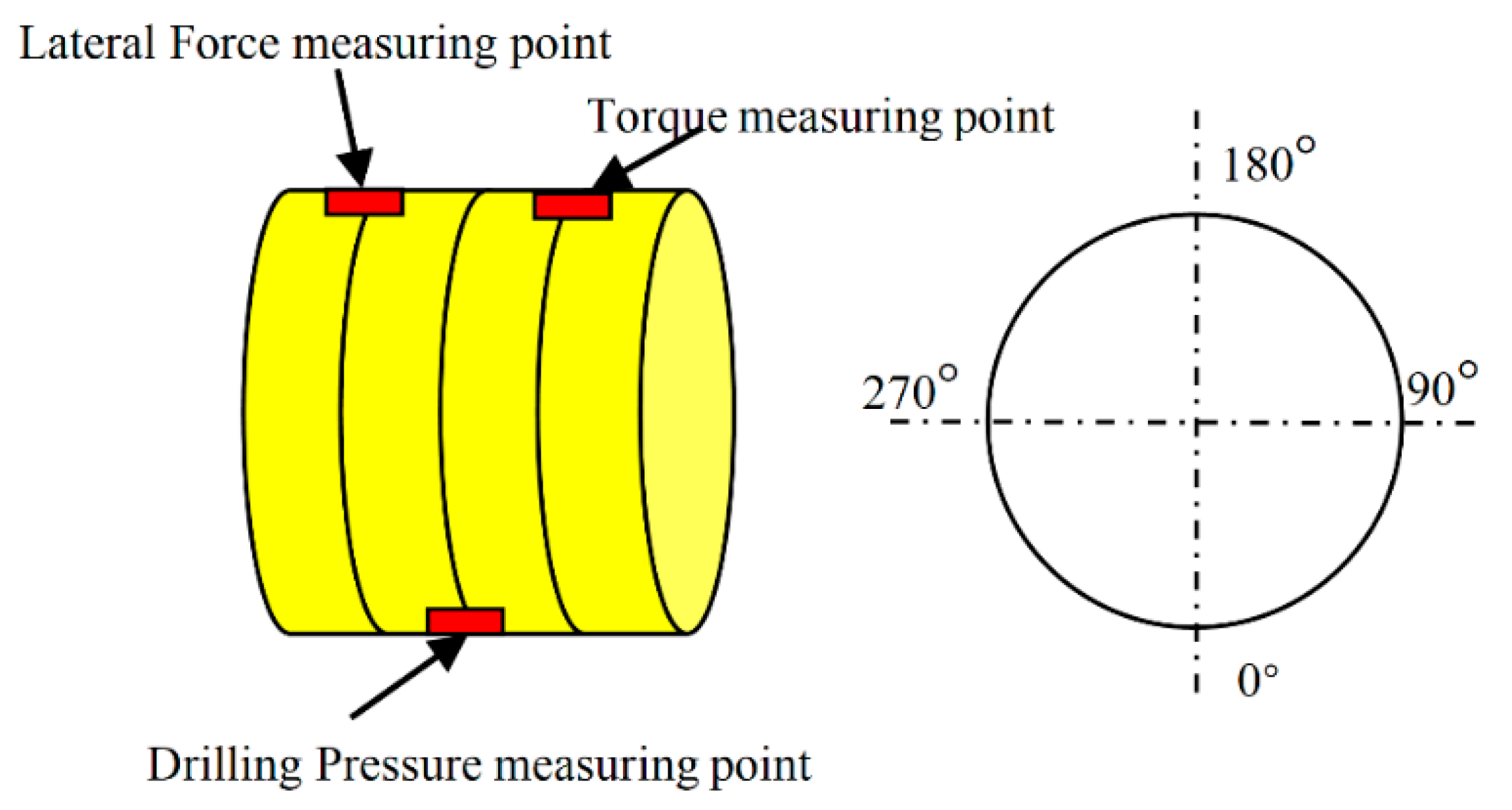
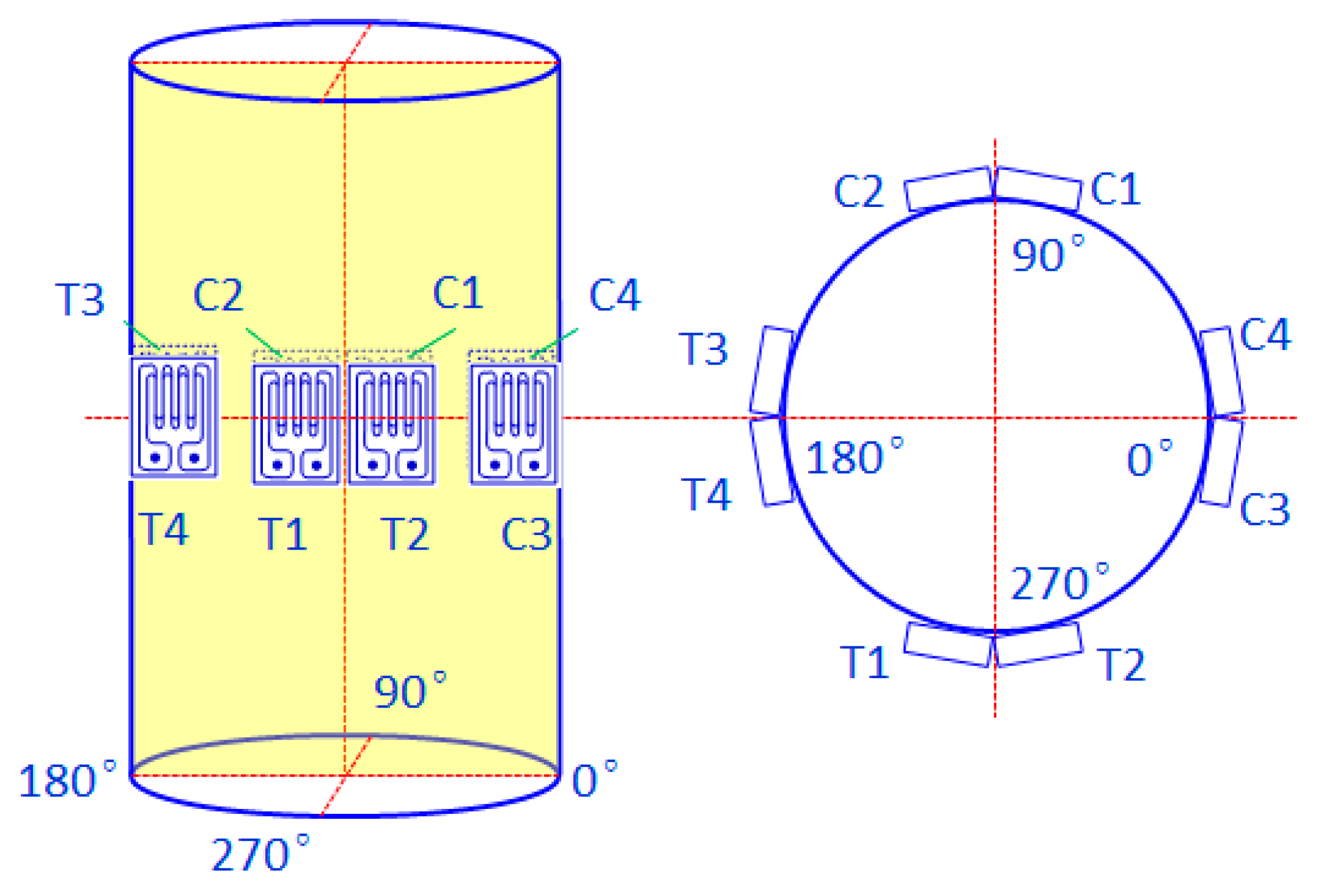
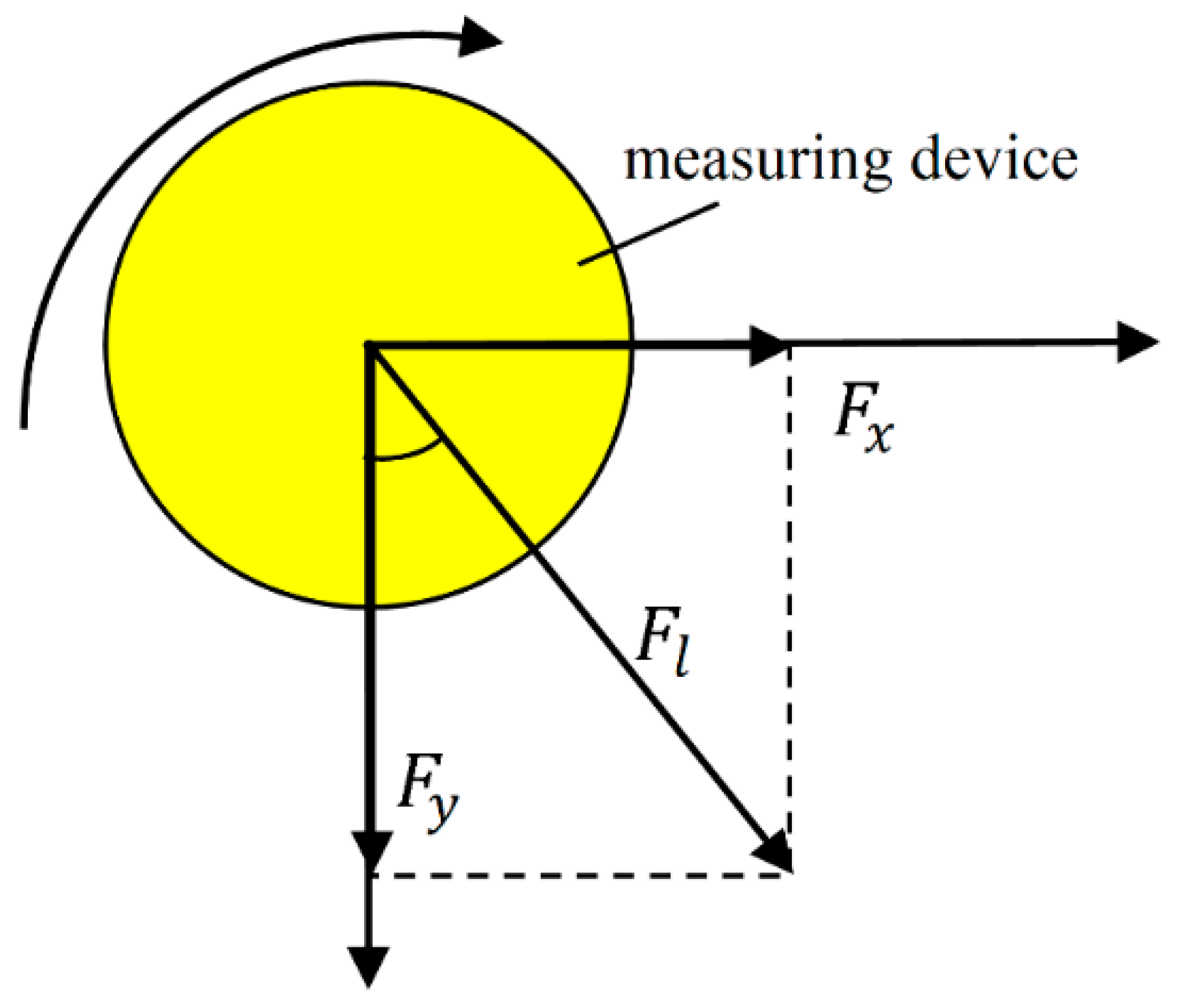
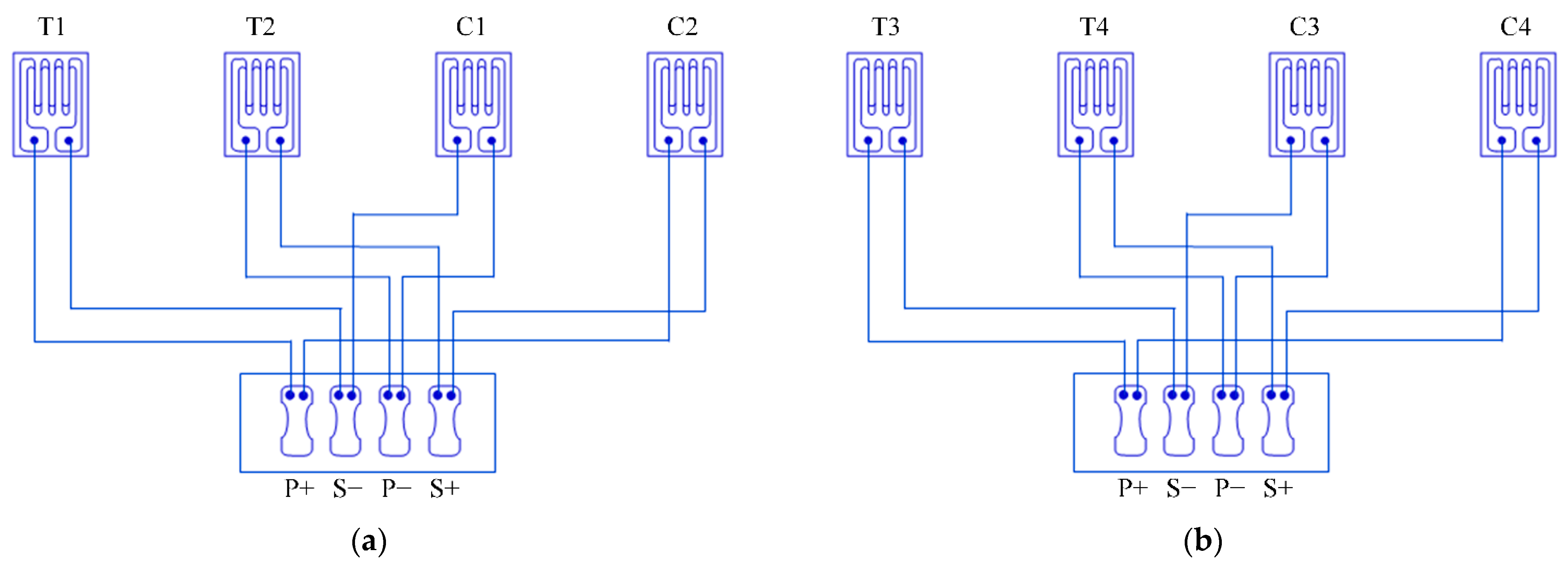
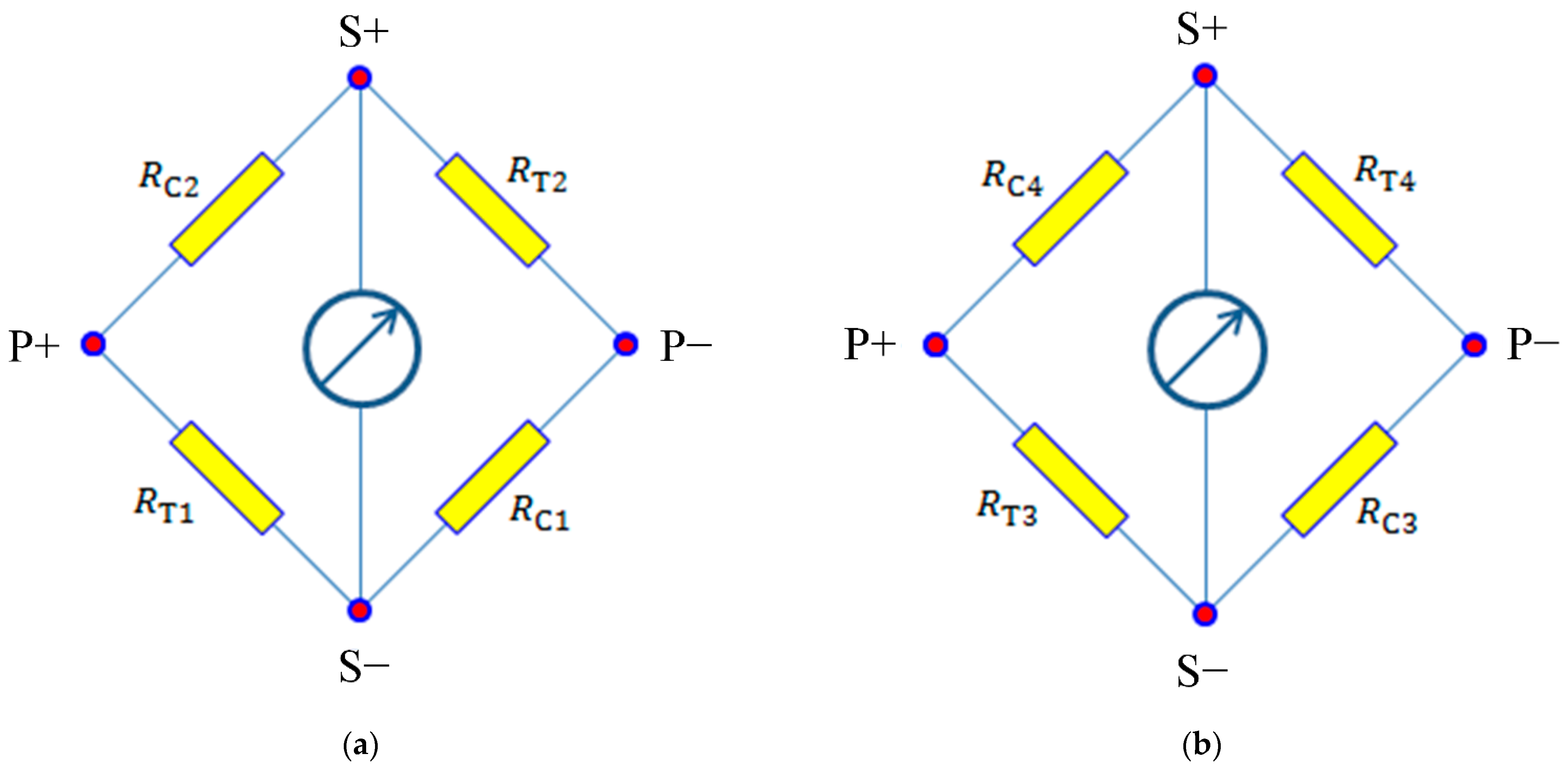
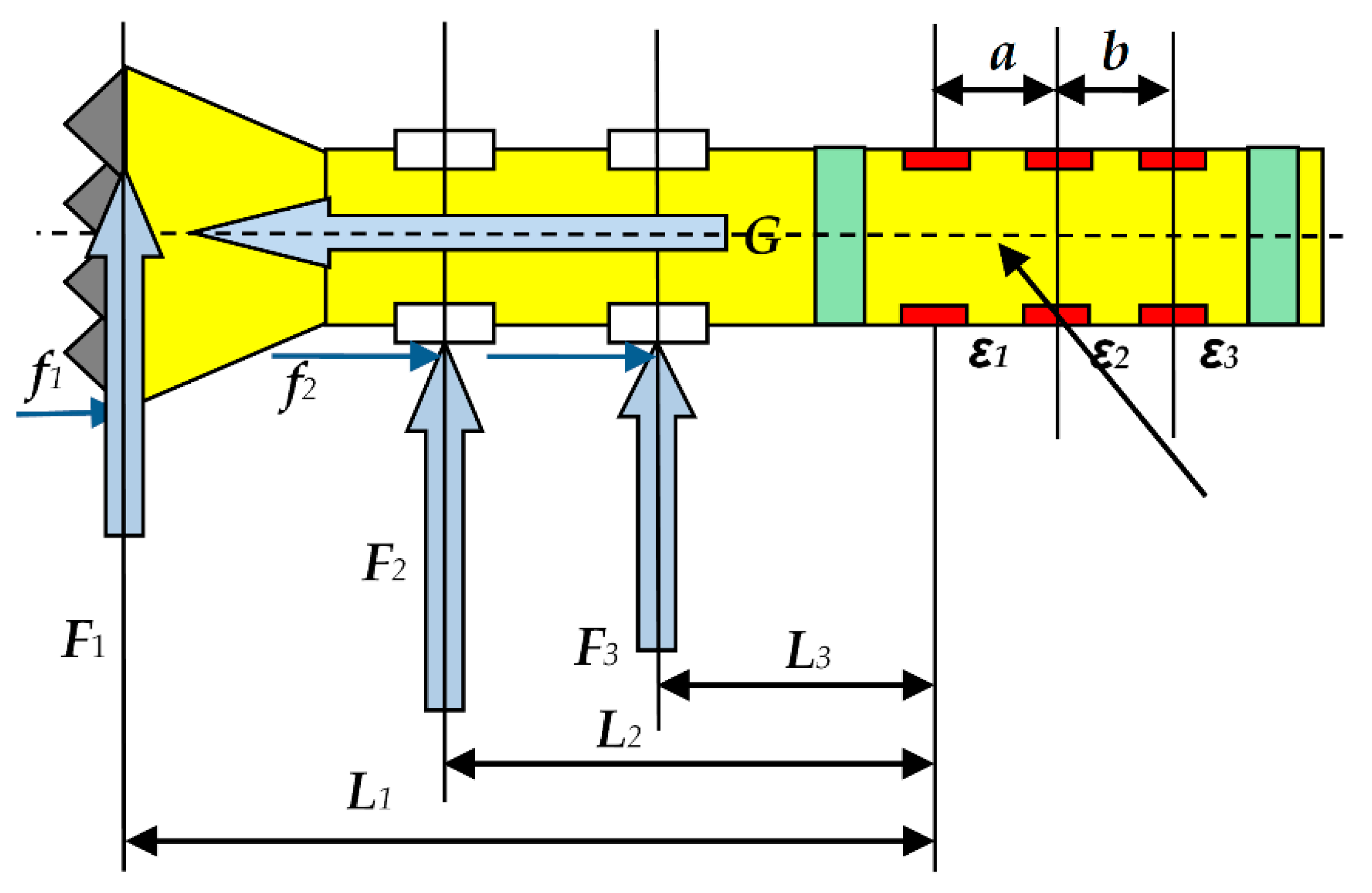
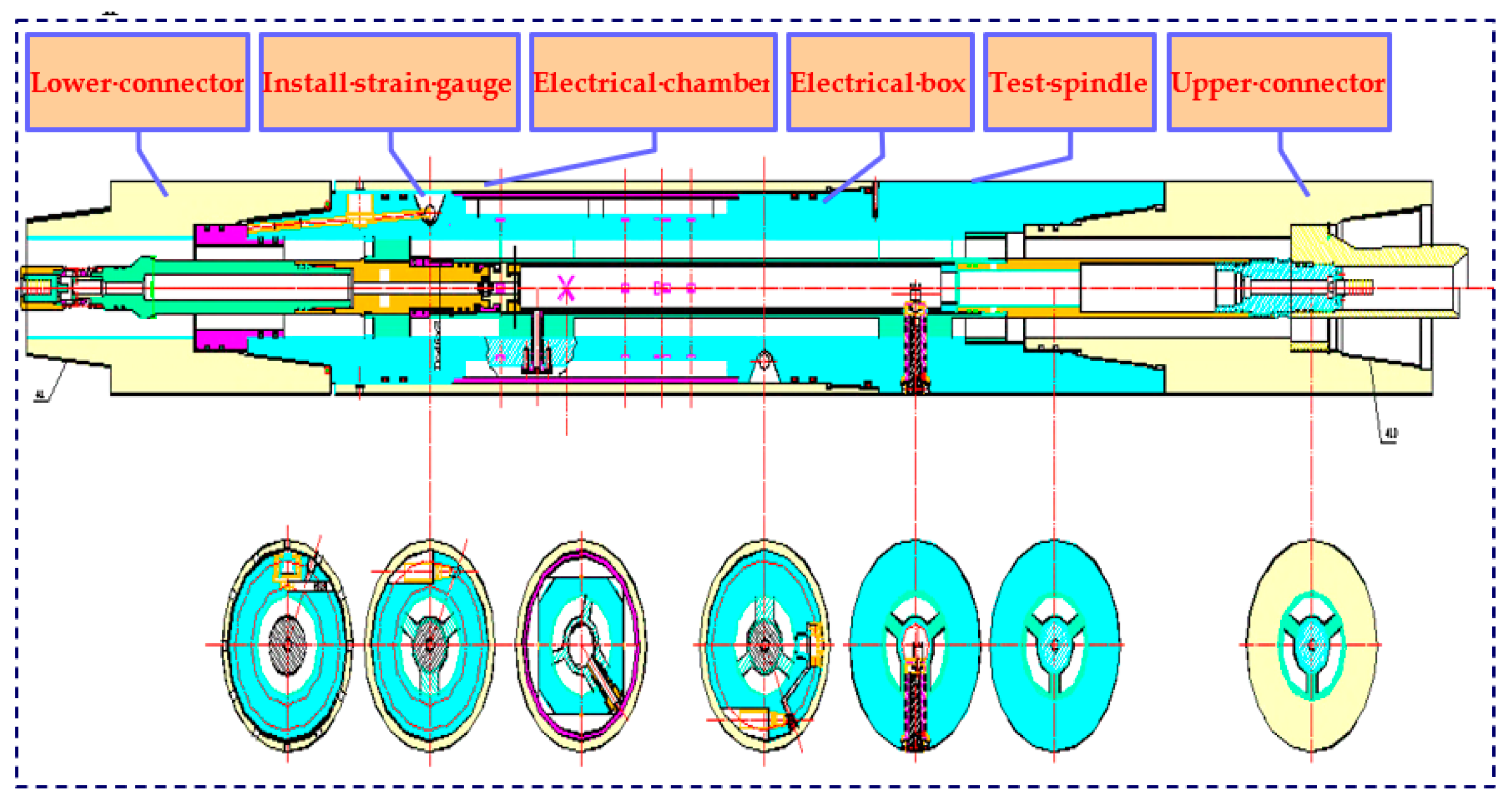
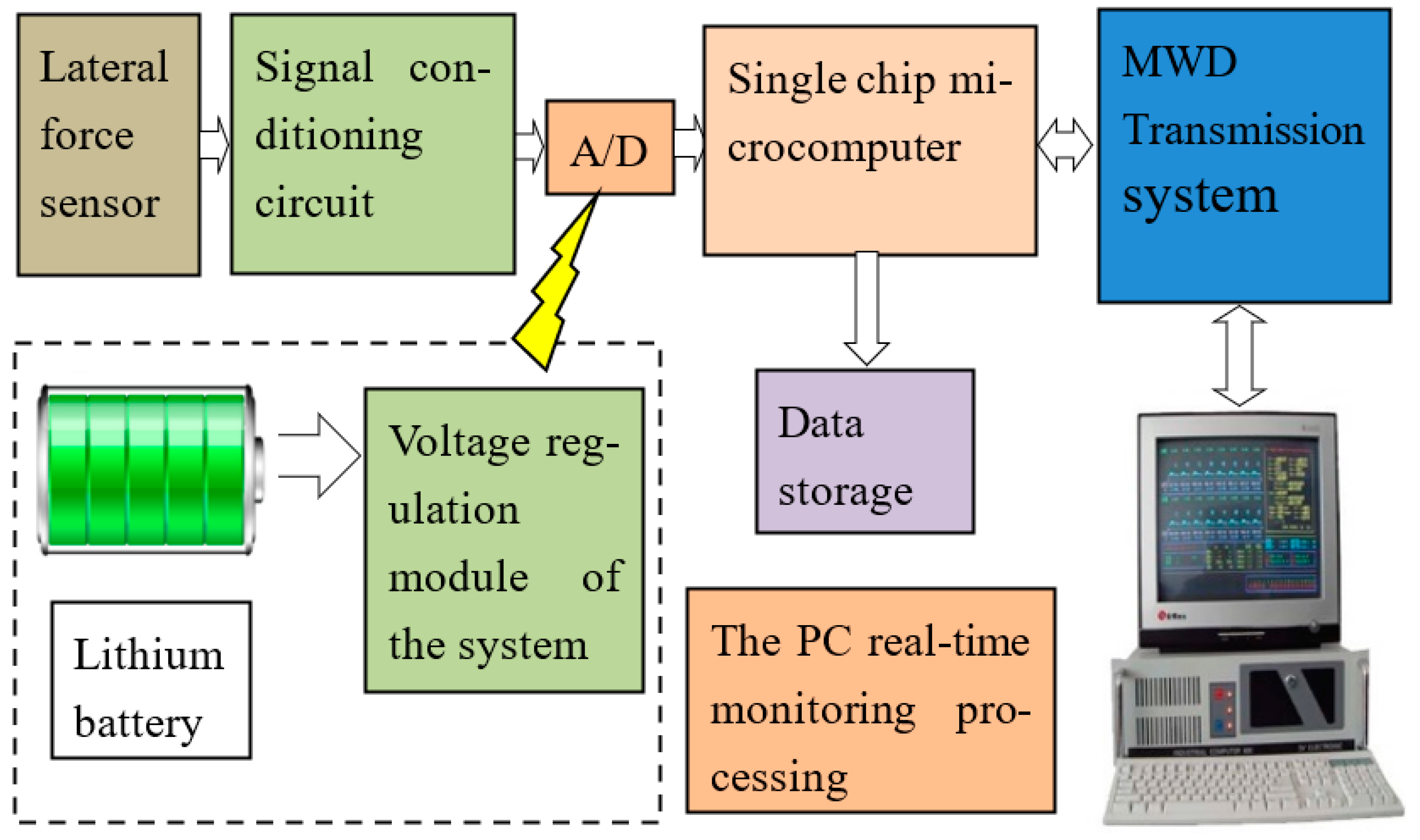
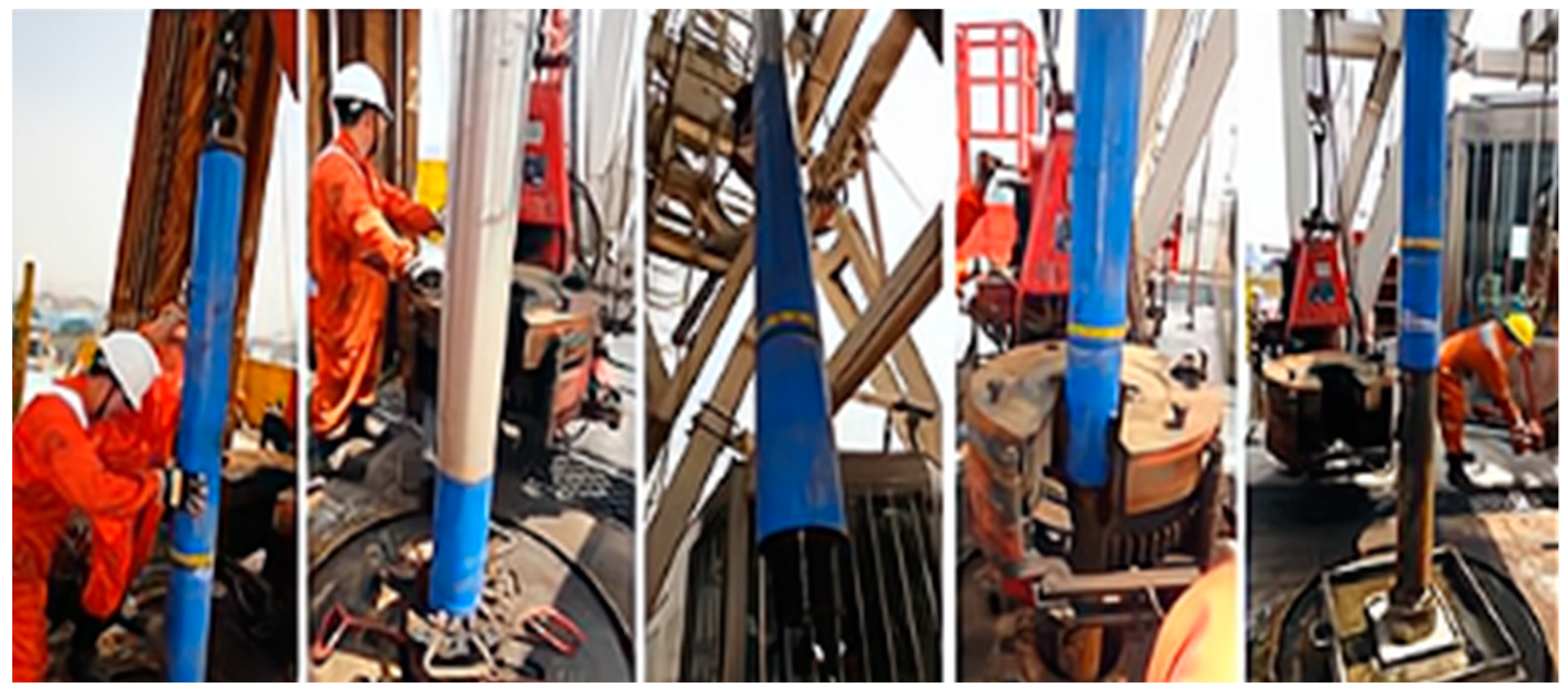
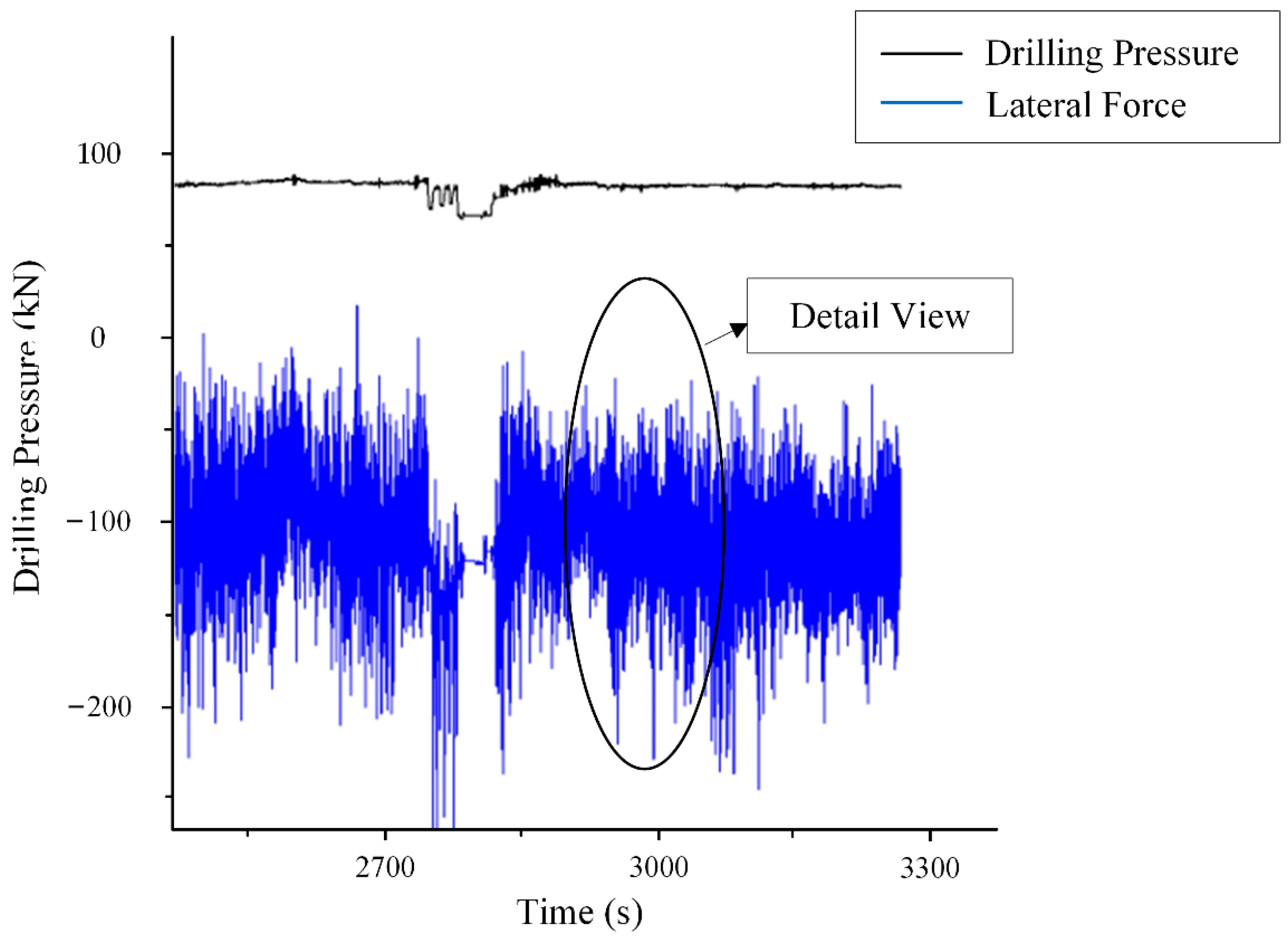
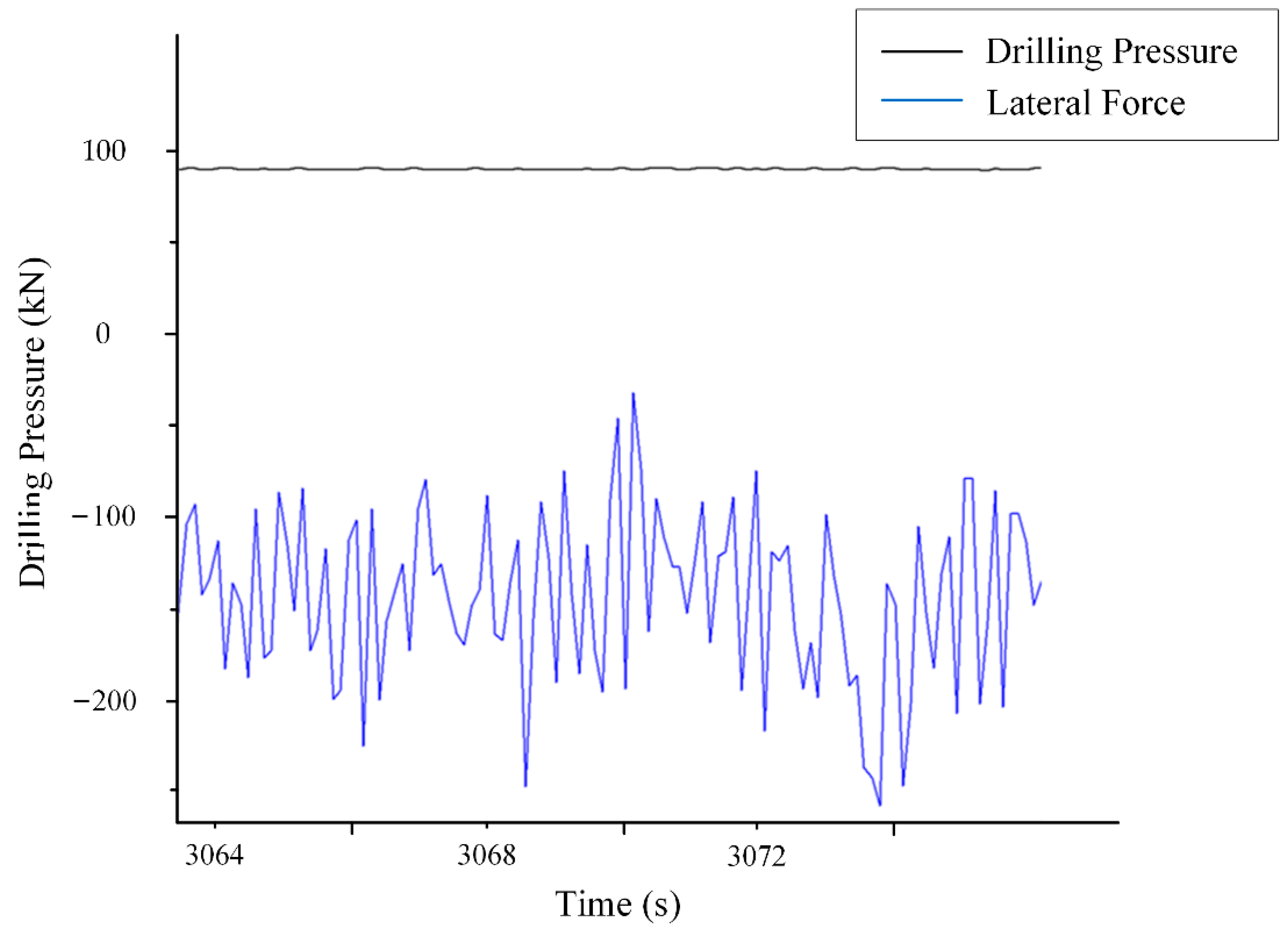


Publisher’s Note: MDPI stays neutral with regard to jurisdictional claims in published maps and institutional affiliations. |
© 2022 by the authors. Licensee MDPI, Basel, Switzerland. This article is an open access article distributed under the terms and conditions of the Creative Commons Attribution (CC BY) license (https://creativecommons.org/licenses/by/4.0/).
Share and Cite
Deng, K.; Hu, W.; Ge, L.; Hu, Z.; Yang, Q.; Xiao, X. Study of Downhole Lateral Force Measurement Modelling and Devices in Petroleum Exploration. Energies 2022, 15, 5724. https://doi.org/10.3390/en15155724
Deng K, Hu W, Ge L, Hu Z, Yang Q, Xiao X. Study of Downhole Lateral Force Measurement Modelling and Devices in Petroleum Exploration. Energies. 2022; 15(15):5724. https://doi.org/10.3390/en15155724
Chicago/Turabian StyleDeng, Kui, Wei Hu, Liang Ge, Ze Hu, Qing Yang, and Xiaoting Xiao. 2022. "Study of Downhole Lateral Force Measurement Modelling and Devices in Petroleum Exploration" Energies 15, no. 15: 5724. https://doi.org/10.3390/en15155724
APA StyleDeng, K., Hu, W., Ge, L., Hu, Z., Yang, Q., & Xiao, X. (2022). Study of Downhole Lateral Force Measurement Modelling and Devices in Petroleum Exploration. Energies, 15(15), 5724. https://doi.org/10.3390/en15155724





